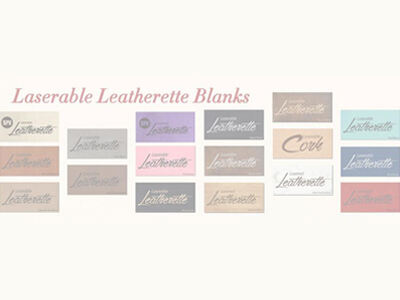Leather products are prized for their texture and durability. As personalized customization grows, laser engraving shines for adding unique designs to leather with precision. Still, some rely on home heat press machines, which can damage leather if not used correctly. Here’s how to avoid that and why laser engraving stands out.
Home heat press machines, designed for fabrics, often harm leather due to its sensitivity to temperature and pressure. High heat can shrink, harden, or burn leather, while too much pressure makes it stiff and less elastic.

To prevent damage:
Temperature: Test on scrap leather first and adjust gradually. Keep it between 100 - 150°C, varying by leather type.
Pressure & Time: Start low, increase as needed. Limit pressing to 5 - 15 seconds and avoid repeated pressing in one spot.
Heat Press Plate: Ensure it’s smooth and clean for even pressure; inspect and clean before use.
Pre-treating leather is key. Clean the surface thoroughly to remove dust and oils, which can stain when heated. If dry, apply a leather conditioner to boost flexibility.
However, home heat presses have limits for leather. Laser engraving excels with its precise, high-energy beam that etches detailed designs. Its controlled temperature prevents shrinkage, and the non-contact process avoids pressure damage. It’s also efficient for batch work, perfect for luxury leather items.
In short, careful control is vital when using home heat presses on leather. But for lasting quality, laser engraving offers a better solution to enhance leather products' value.

 EN
EN
 AR
AR
 BG
BG
 HR
HR
 CS
CS
 DA
DA
 NL
NL
 FI
FI
 FR
FR
 DE
DE
 EL
EL
 HI
HI
 IT
IT
 JA
JA
 KO
KO
 NO
NO
 PL
PL
 PT
PT
 RO
RO
 RU
RU
 ES
ES
 SV
SV
 CA
CA
 TL
TL
 IW
IW
 ID
ID
 LV
LV
 LT
LT
 SR
SR
 SK
SK
 SL
SL
 UK
UK
 VI
VI
 SQ
SQ
 ET
ET
 GL
GL
 HU
HU
 MT
MT
 TH
TH
 TR
TR



